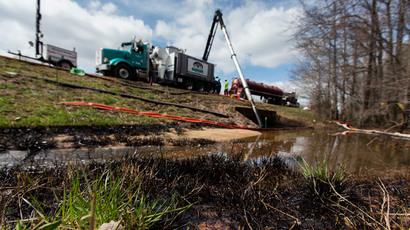Ohio oil spill much worse than previously thought (PHOTOS)
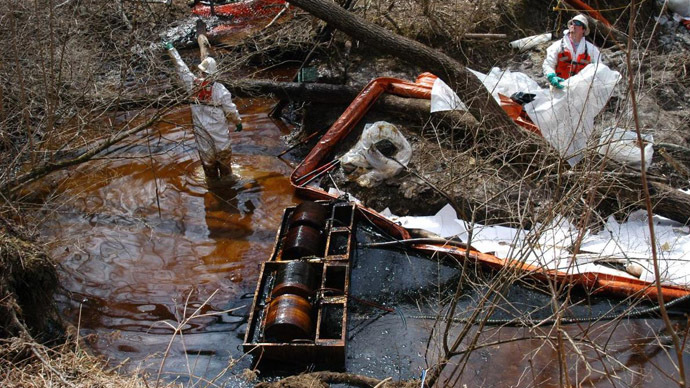
The Environmental Protection Agency has doubled its estimate of the amount of crude oil that leaked into a nature preserve in Ohio through an underground pipe.
According to the Associated Press, federal officials have calculated that more than 20,000 gallons of crude oil seeped into the Oak Glen Nature Preserve by the time they first noticed a 5-inch crack in the pipeline on March 17. Initially, officials projected that 240 barrels of oil, or 10,000 gallons, had spilled.
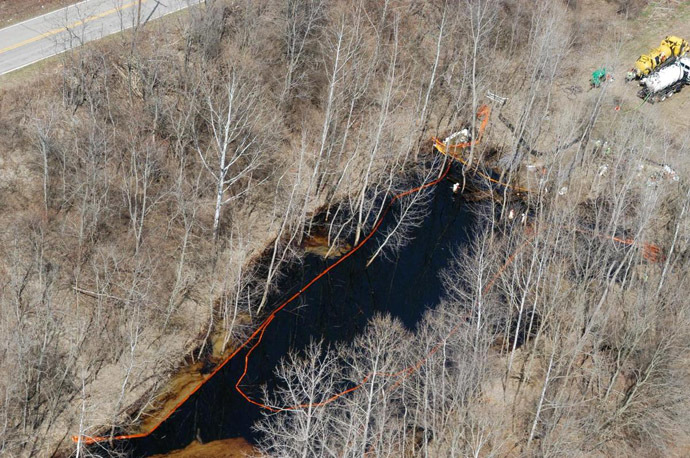
While efforts to clean up the spill continue, Sunoco Logistics, the company that controls and operates the pipeline, said the crack has been successfully repaired under a plan approved by the federal government. A special clamp was installed on the pipe near the leak, and was tested before the oil flow was turned back on Sunday.
The cause of the incident remains unknown, however, and Sunoco spokesman Jeff Shields told the AP it is still being investigated. The cracked section of the pipe will likely be removed at some point in the future and taken to a laboratory for analysis.
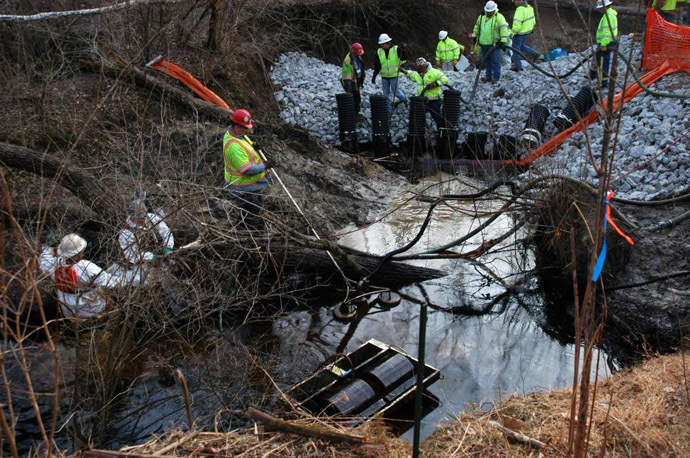
Despite the leak, officials said that air and water quality tests in the surrounding area have all turned out well, and that local water supplies are not at risk. As RT reported previously, the oil had primarily collected in a marshland area the size of a football field, while natural barriers kept it from flowing into the Great Miami River.
While human health is not in any danger, the oil spill does pose a threat to local wildlife such as amphibians and fish, some of which have been found dead in the area. Site workers are currently collecting contaminated animals as they find them, cleaning them and releasing them back into the habitat. Officials told the AP that lingering winter weather has limited the damage, since fewer animals are traveling through the environment.
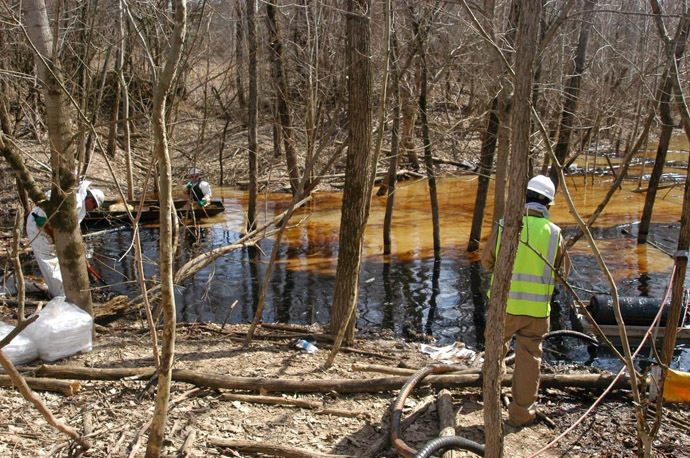
As Great Parks Stewardship Manager Bob Mason said last week, the spill “could definitely have been worse later in the spring when all of our wildlife is coming out of hibernation. Plus now the ground is still hard, still somewhat frozen, so that helps."
In the meantime, workers have gathered about 35,000 gallons of oil mixed with water, roughly 17,000 gallons of which is crude oil.
Unfortunately, this isn’t the first time this particular pipeline has run into a problem. According to the US Department of Transportation, it has suffered 39 incidents since 2006, losing more than 31,000 gallons of oil and inflicting about $7.5 million in damages.














